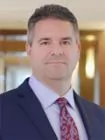In Diebold Nixdorf, Inc. v. ITC, the Federal Circuit reversed the ITC's finding of a Section 337 violation based on the ITC's reliance on unrebutted expert testimony. Diebold, No. 17-2553 (Fed. Cir. Aug. 15, 2018). The case is an important reminder that an ALJ may find that an expert's conclusory testimony, even if unrebutted, carries little weight.
Hyosung TNS Inc. and Nautilus Hyosung America Inc. ("Complainants") own a patent directed to ATMs that can receive and process a bundle of checks and cash at the same time. The patent claims all require a "cheque standby unit." Complainants filed a complaint with the ITC asserting that Diebold ("Respondent") infringed its patent. In its defense, Respondent argued that the phrase "cheque standby unit" rendered the claims indefinite. ALJ Shaw rejected Respondent's argument, and the Commission concluded that Respondent violated Section 337. Last week, the Federal Circuit reversed.
35 U.S.C. § 112(f), like pre-AIA section 112 ¶ 6, allows a patentee to claim a "means or step" for performing a "function" without including corresponding structure in the claim itself. By statute, such means-plus-function claims are "construed to cover the corresponding structure, material, or acts described in the specification and equivalents thereof." If the claim does not expressly use the term "means," there is a rebuttable presumption that the claim is not a means-plus-function claim. The presumption is rebutted if the claim term fails to "recite sufficiently definite structure" or recites "function without reciting sufficient structure for performing that function." Williamson v. Citrix Online, LLC, 792 F.3d 1339, 1349 (Fed. Cir. 2015) (en banc). If a patent contains means-plus-function claims but the specification does not contain corresponding structure, the claims are invalid as indefinite.
The claims of Complainants' patent do not use the word "means," so the rebuttable presumption that they are not means-plus-function claims applied. The presumption, however, was overcome. The Federal Circuit quickly showed that the claims and intrinsic record did not suggest any structure for "cheque standby unit."
More interesting is the Court's analysis of the extrinsic evidence. Both Complainants and the Commission invoked Complainants' expert's testimony that "cheque standby unit" connoted sufficient structure and argued that this testimony had to be credited given that Respondent did not introduce any extrinsic evidence to the contrary. The Federal Circuit rejected the argument. It is unreasonable, it held, to require that Respondent "present[] extrinsic evidence that one of ordinary skill would fail to understand that a term connotes a definite structure." Complainants' expert's testimony did not move the needle either. His testimony was conclusory and even his definition of "cheque standby unit" used "purely functional definitions."
Having found that the patent recited means-plus-function claims, the Court reviewed the specification and found that the specification lacked sufficient corresponding structure. The claims were therefore indefinite.
Takeaway
This case is a reminder that the Federal Circuit will not abdicate its role on review just because there is some formally unrebutted extrinsic evidence on the record. Instead, experts need to substantively justify their reasoning even when their positions are not formally rebutted. Otherwise, their testimony may be ignored.
The content of this article is intended to provide a general guide to the subject matter. Specialist advice should be sought about your specific circumstances.


